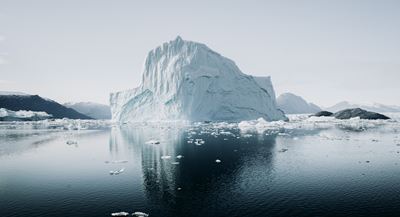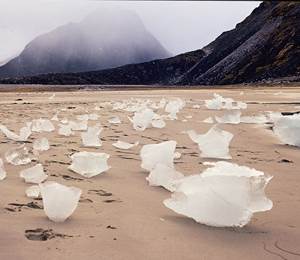
There are 16 major global climate tipping points, of which nine are related to frozen ground, snow, ice, and cold ocean.
Global warming will trigger irreversible changes to the oceans, the sea ice coverage, the Greenland and Antarctic icecaps, the tundra, taiga, and permafrost. We are rapidly approaching tipping points - points of no return - that will completely change the Arctic and severely impact livelihoods and nature globally. If we cross them, it will permanently affect and alter life worldwide for millions if not billions of people. In other words, the future of the Arctic is directly linked to the wellbeing of the whole planet.
Potentially cascading, irreversible events are already taking place. We still have time to address these issues, but only if we, the global community, act now. We need to prevent, mitigate, adapt to and reverse the rapidly changing climate - to ensure a more sustainable future for all of us.
Reducing greenhouse gas (GHG) emissions as agreed in the Paris agreement is the only sustainable pathway to a liveable future. However, it is looking extremely likely that global warming will exceed the 1.5 degree threshold (IPCC special report 2018), and IEA states that we are on a path to 2.4 degrees C. This risks several tipping point thresholds - especially in the Greenland and West Antarctic ice sheets, the summer Arctic sea ice, and Arctic permafrost. This means that the world, in parallel with reducing GHG, must develop science based interventions that can be deployed if necessary when global governance and regulations are in place.
To find solutions that will postpone or reduce the impact of the tipping points is a rapidly emerging challenge. The people, communities and institutions in the Arctic are the best experts on this region: they have knowledge of what is happening and the potential to find solutions to change course. UArctic’s aim is to identify, further develop, test and evaluate the effectiveness and impact of such solutions.
We currently focus our efforts on the Frozen Arctic Projects initiative. In addition, the UArctic Thematic Network on Frozen Arctic Conservation is doing further studies on one particular project, the Seabed Curtain.
The Tipping Point Actions program has been identified as a priority for philanthropic fundraising by the UArctic Board.

Various climate action measures have been suggested to slow down, halt, or even reverse the effects of climate change in the Arctic, but so far there is no clear understanding which of them could actually be feasible, timely, and deployable at scale. Our team seeks to remedy this by collecting all possible action schemes, and systematically evaluating and assessing them.